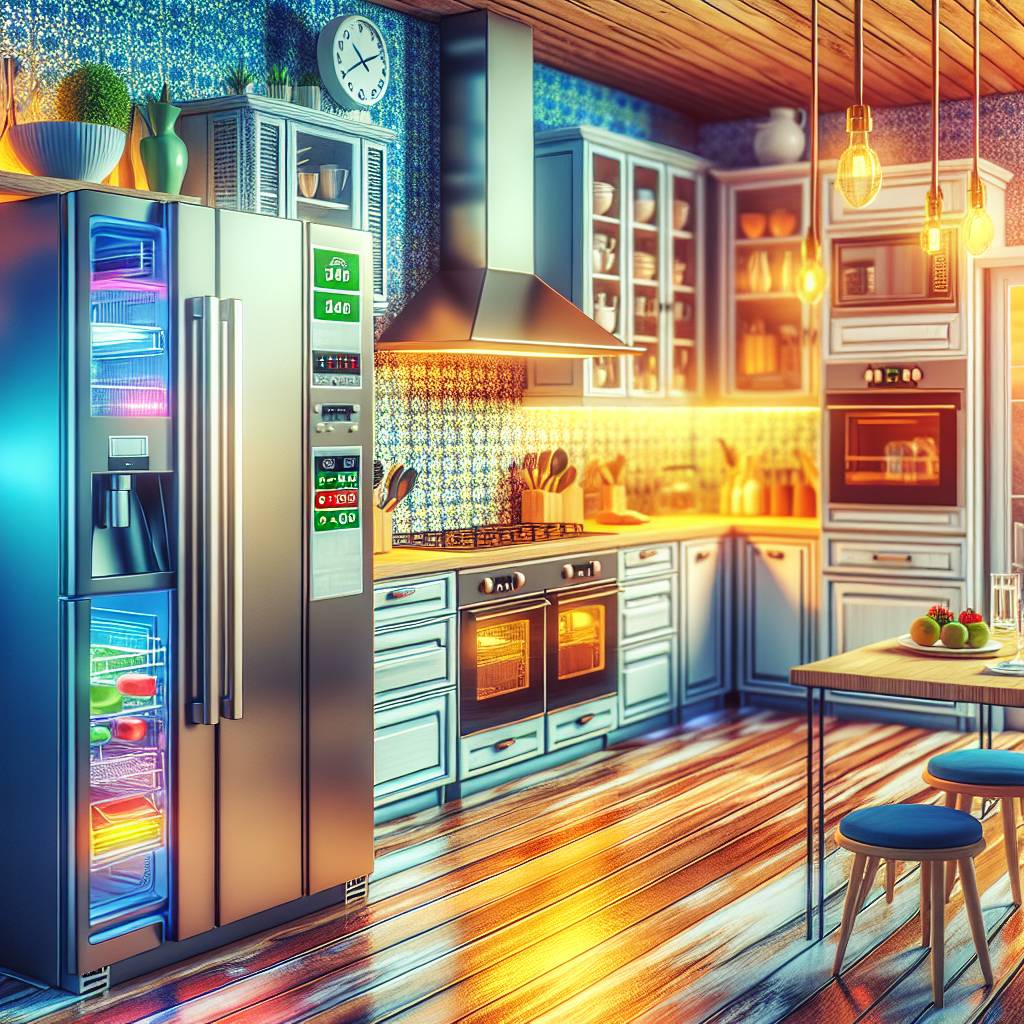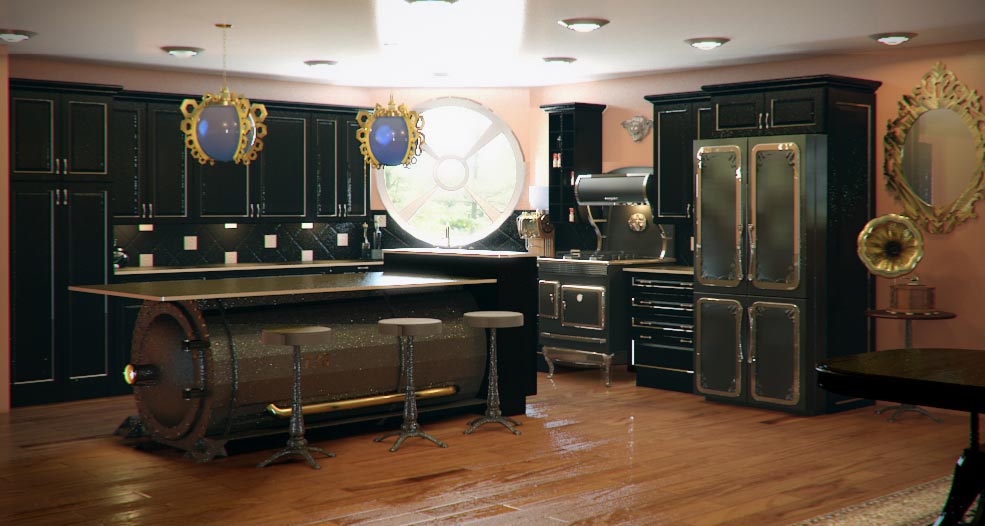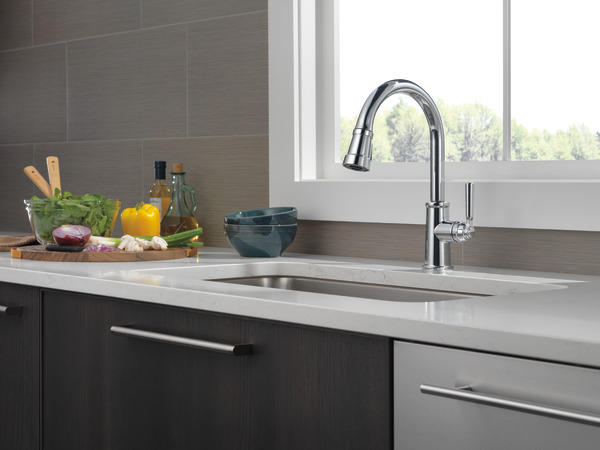Want to cut down on your energy bills while reducing your carbon footprint? Your kitchen appliances might be the perfect place to start. By making a few simple adjustments, you can significantly lower your energy consumption without sacrificing convenience or performance. From choosing energy-efficient models to optimizing usage habits, there are numerous ways to make a substantial impact on both the environment, your wallet, and your carbon footprint.
Small changes can yield big results. In this post, we’ll explore practical tips and tricks that will help you maximize efficiency and minimize energy waste in the heart of your home. Get ready to revolutionize how you use your kitchen gadgets!
Key Takeaways
- Embracing energy-efficient appliances can significantly reduce energy consumption in the kitchen, leading to long-term cost savings and environmental benefits.
- Reducing standby power usage by unplugging appliances when not in use or utilizing power strips can prevent unnecessary energy wastage.
- Optimizing cooking practices such as using the right-sized pots and pans, matching burner sizes, and covering pots while cooking can maximize energy efficiency.
- Refrigeration and freezing strategies like proper maintenance, temperature settings, and avoiding overstocking can minimize energy usage of refrigerators and freezers.
- Smart cooking appliance use, including utilizing microwave ovens and pressure cookers for energy-efficient meal preparation, can contribute to lower energy consumption.
- Enhancing oven and stovetop efficiency through proper preheating, batch cooking, and utilizing residual heat can save energy during meal preparation.
Embracing Energy-Efficient Appliances
Choosing Efficient Models
Selecting the right models is crucial. Look for ENERGY STAR certified appliances, as they are designed to consume less energy while delivering high performance. Consider appliances with inverter technology such as refrigerators and air conditioners, which adjust their power based on the level of cooling needed. Opt for appliances with high energy efficiency ratings, indicated by a range of letters from A+++ (most efficient) to D (least efficient).
When shopping for new kitchen appliances, it’s important to consider their energy consumption. By choosing models that are more efficient in their use of electricity, you can significantly reduce your household’s overall energy use and lower your carbon footprint.
Understanding Energy Labels
Understanding the information provided on energy labels can help you make informed decisions when purchasing new kitchen appliances. Pay attention to the energy guide label, which provides an estimate of the appliance’s annual energy consumption and operating costs based on average usage.
Comparing these details between different models will allow you to choose the most efficient option that aligns with your budget and needs. Check for the recognizable blue ENERGY STAR label indicating that a product meets or exceeds specific energy-efficiency criteria set by the U.S. Environmental Protection Agency.
Right-Sizing Appliances
Selecting appropriately sized kitchen appliances is another essential aspect of saving energy in your home. Avoid oversized refrigerators and freezers if they exceed what is necessary for your household’s storage needs and available space.
For smaller kitchens or households with limited space, consider compact or counter-depth options that not only save space but also require less energy to operate due to their smaller size.
By choosing appropriately sized kitchen appliances tailored to your specific needs, you can optimize their efficiency while reducing unnecessary energy consumption.
Maintaining Efficiency
Maintaining the efficiency of your existing kitchen appliances is just as important as selecting new ones wisely. Regularly cleaning refrigerator coils helps ensure optimal performance by allowing them to release heat more efficiently.
Keeping oven and stovetop burners clean and clear from debris improves their heating capabilities while consuming less electricity or gas during cooking processes. Scheduling professional maintenance services at regular intervals ensures that major kitchen appliances such as refrigerators, ovens, dishwashers remain in peak working condition while using minimal amounts of power.
Reducing Standby Power Usage
Unplugging Appliances
One effective strategy is to unplug them when not in use. Many kitchen gadgets and devices continue consuming energy even when turned off. By unplugging them, you can prevent this standby consumption. For example, coffee makers, blenders, and microwaves are often left plugged in throughout the day, contributing to unnecessary energy usage.
Using smart power strips is another way to tackle standby power usage. These innovative power strips can detect when a device is not in use and automatically cut off its power supply. This eliminates standby consumption without requiring manual unplugging of each appliance. Smart power strips are especially useful for kitchen setups with multiple appliances that are frequently switched on and off.
Utilizing Advanced Power Strips
To further reduce phantom loads from kitchen appliances, consider utilizing advanced power strips. These specialized devices go beyond traditional surge protectors by cutting off electricity completely from all connected devices when they’re turned off or not in use. By consolidating multiple appliances into a single advanced power strip, you can effectively eliminate standby consumption across various kitchen gadgets.
Turning off the entire power strip before leaving the kitchen ensures that no appliance continues drawing standby power while you’re away. This simple habit helps avoid unnecessary energy wastage caused by phantom loads from idle devices.
Optimizing Cooking Practices
Efficient Cooking Methods
There are several methods that can help you save energy. For baking, consider using convection ovens as they cook faster and more evenly than conventional ovens. Toaster ovens are great for small baking tasks, while air fryers offer an energy-efficient alternative for various dishes.
Another way to conserve energy is by choosing steaming over boiling for vegetables and seafood. Steamers not only save time but also allow you to steam multiple items at once. This method helps retain more nutrients in the food compared to boiling.
Batch Cooking Benefits
Batch cooking is a fantastic way to save both time and energy in the kitchen. By preparing large batches of meals at once, you can significantly reduce the frequency of using your appliances. Moreover, utilizing leftovers from these batch-cooked meals for future lunches or dinners minimizes waste and saves additional energy.
To make batch cooking even more effective, invest in high-quality storage containers that keep your prepared meals fresh longer without requiring excessive reheating.
Utilizing Residual Heat
One often overlooked strategy for saving energy during cooking is making use of residual heat from your appliances. For example, turning off burners a few minutes before food is fully cooked allows you to utilize the remaining heat to finish the cooking process while minimizing gas or electricity usage.
Similarly, when baking or roasting in an oven, taking advantage of residual heat by turning off the appliance slightly earlier and letting existing heat complete the process reduces overall energy consumption.
Refrigeration and Freezing Strategies
Fridge Temperature Settings
Refrigerators should be set between 35°F and 38°F to keep food fresh while ensuring optimal energy efficiency. For the freezer, maintaining a temperature of 0°F is crucial for efficient operation. Using a fridge thermometer can help monitor these settings accurately.
Maintaining the right temperature in your fridge and freezer not only keeps your food fresh but also ensures that your appliances are running efficiently. When the temperatures are too high, your appliances have to work harder to keep things cool, using up more energy in the process.
Regularly checking and adjusting these settings as needed will help you save on energy costs without compromising the quality of refrigerated or frozen items.
Freezer Maintenance
For manual-defrost freezers, it’s essential to defrost them regularly. Ice buildup can reduce their efficiency by acting as insulation, making them work harder to stay cold. Keeping the door seals clean and intact is crucial for preventing air leaks that can lead to increased energy consumption.
Organizing the contents of your freezer is also important for improving airflow within it. This means arranging items so that air can circulate freely around them, helping maintain consistent temperatures throughout the appliance.
By following these maintenance tips, you ensure that your freezer operates at its best capacity while consuming minimal energy.
Proper Fridge Loading
Properly loading your refrigerator plays a significant role in optimizing its energy usage. Allowing adequate space around items inside helps promote airflow within the appliance, reducing strain on its cooling system.
Avoid overfilling your fridge as this obstructs airflow and forces it to work harder than necessary. By storing food based on their temperature needs—keeping dairy products in cooler areas and fruits/vegetables in designated drawers—you create an environment where everything stays fresh without wasting excess energy.
Smart Cooking Appliance Use
Matching Pans to Burners
Using appropriately sized pots and pans can significantly impact energy efficiency. By matching pan bottoms to burner sizes, you ensure that heat is distributed evenly and not wasted. For instance, placing a small pan on a large burner leads to heat loss around the sides of the pan. Conversely, using oversized cookware on small burners results in inefficient heating.
Utilizing the right-sized cookware for each burner minimizes heat loss and maximizes energy transfer during cooking. This simple adjustment can help reduce overall energy consumption in the kitchen, making your cooking process more efficient while also saving money on utility bills.
Microwaving Small Portions
Microwaving small portions instead of using conventional ovens or stovetops is an effective way to save energy when preparing quick meals or reheating leftovers. Microwave ovens consume less power compared to traditional cooking appliances, especially when used for shorter durations with smaller quantities of food.
Using microwave-safe dishes and covers ensures safe and efficient reheating without needing additional cookware for transferring food from one container to another. Modern microwaves equipped with sensors or timers allow precise control over cooking times, preventing unnecessary overcooking or overheating that could waste energy.
By leveraging these features, you can minimize electricity usage while enjoying the convenience of quickly prepared meals without compromising taste or quality.
Slow Cooking Advantages
Embracing slow cooking advantages through the use of slow cookers offers multiple benefits for conserving energy in the kitchen. Slow cookers operate at lower temperatures over extended periods, consuming less electricity than conventional ovens or stovetops used for similar recipes.
Preparing one-pot meals further reduces additional cookware usage since slow cooker recipes often involve combining various ingredients into a single pot for long-duration simmering. This streamlined approach not only saves time but also minimizes dishwashing needs after meal preparation—another indirect method of reducing water and energy consumption associated with frequent dish cleaning.
Moreover, slow-cooked dishes are known for their tender textures and rich flavors achieved through prolonged low-temperature cooking—a testament to how this method not only saves time but also enhances culinary outcomes without excessive hands-on involvement.
Water Heating and Usage Efficiency
Precise Water Boiling
One of the simplest yet effective tips is to measure water accurately before boiling. By using just the right amount of water, you can minimize watts consumed during the boiling process. Covering pots when bringing water to a boil helps retain heat and reduces the time required for boiling. This practice not only saves energy but also speeds up cooking.
Another way to save energy while boiling water is by using electric kettles. Electric kettles are more efficient than stovetop methods because they directly transfer heat to the water, resulting in faster boiling times and reduced energy usage. For instance, an electric kettle uses about 50% less energy than a stovetop kettle to boil the same amount of water.
Efficient Dishwashing Practices
In addition to optimizing water heating efficiency, implementing efficient dishwashing practices can significantly reduce overall energy usage in your kitchen. Instead of pre-rinsing dishes before loading them into the dishwasher, simply scrape off excess food particles. Pre-rinsing not only wastes water but also increases hot water consumption as most dishwashers use heated rinse cycles.
Running full dishwasher loads whenever possible maximizes its energy efficiency, as it takes nearly as much power and hot water to run a partial load as it does for a full load. Moreover, selecting shorter wash cycles when appropriate further conserves both electricity and hot water without compromising cleanliness.
Enhancing Oven and Stovetop Efficiency
Covering Pots and Pans
When cooking, cover pots and pans with lids to keep the heat inside. This helps retain the heat within the cookware, allowing your food to cook more efficiently. By trapping steam with lids, you can also reduce cooking times significantly.
Not only does covering your pots and pans help in retaining heat, but it also minimizes heat loss from uncovered cookware. This simple step can make a noticeable difference in energy consumption over time. For example, when boiling water for pasta or vegetables, placing a lid on the pot can expedite the process while using less energy.
Minimizing Door Checking
To enhance oven efficiency, limit opening the oven door while cooking. Every time you open the door, you let out a significant amount of heat which then needs to be reheated once closed again. This constant fluctuation affects energy usage and extends cooking times unnecessarily.
Similarly, avoid frequent peeking into the refrigerator or freezer as this causes cold air to escape each time. It’s beneficial to plan ahead before opening these appliances so that you retrieve all needed items at once rather than repeatedly opening and closing them throughout meal preparation.
Meal Preparation Techniques
Meal Planning and Prep
Meal planning is essential for energy-saving in the kitchen. By planning meals in advance, you can optimize your appliance usage. For example, if you’re using the oven to roast vegetables for one dish, consider baking a lasagna at the same time. This way, you maximize the oven’s capacity and reduce overall energy consumption.
Preparing ingredients in bulk for multiple recipes also helps save energy. Instead of chopping onions or grating cheese separately for each meal, do it all at once and store them properly. This not only saves time but also reduces the number of times you use appliances like food processors or blenders throughout the week.
Coordinating cooking times for multiple dishes is another effective strategy. If some dishes require similar temperatures and cooking times, cook them together rather than one after another. It minimizes preheating requirements and optimizes oven or stovetop usage.
Passive Cooking Methods
Passive cooking methods are great ways to minimize energy use while preparing meals. Thermal cookers or insulated containers are perfect examples of slow-cooking alternatives that help conserve energy by retaining heat efficiently over long periods without requiring additional power input.
During warmer months, embracing no-cook recipes can significantly reduce your kitchen’s energy consumption. Salads, wraps, sandwiches, cold soups – these are all delicious options that don’t involve any cooking process at all! Plus, they keep your kitchen cooler when outdoor temperatures soar.
Solar ovens and outdoor grills offer fantastic opportunities to harness natural resources like sunlight and open flames as alternative cooking methods. These methods not only save electricity but also add unique flavors to your dishes through different cooking techniques such as smoking or solar-baking.
Seasonal Kitchen Energy Savings
Summer Energy Tips
When it’s scorching outside, consider grilling your meals outdoors instead of using indoor ovens or stoves. Grilling not only saves energy but also keeps the heat out of your home. Opt for cold meals like salads or sandwiches on hot days to avoid using kitchen appliances altogether.
Encouraging family members to contribute to meal planning and preparation can make a significant difference in reducing kitchen energy consumption. Teach children about energy-efficient kitchen practices so they understand the importance of saving energy. By fostering a collaborative approach, you can collectively reduce the overall energy usage in your kitchen.
Family Meal Dynamics
Summarize key points from each section and encourage readers to implement these energy-saving tips in their kitchens. Emphasize that even small changes, when implemented collectively, can have a substantial impact on overall energy efficiency.
Closing Thoughts
You’ve now unlocked the secrets to a more energy-efficient kitchen! By embracing energy-efficient appliances, reducing standby power usage, and optimizing your cooking practices, you’re well on your way to significant energy savings. Remember, small changes like using smart cooking appliances and enhancing oven efficiency can add up to big differences in your energy consumption over time.
Now it’s time to put these tips into action. Start by identifying one area in your kitchen where you can implement an energy-saving change. Whether it’s adjusting your refrigerator settings or being mindful of water usage, every little effort counts. By making these adjustments, not only will you save on energy costs, but you’ll also contribute to a more sustainable future for our planet. Get started today and be the change your kitchen – and the environment – needs!
Frequently Asked Questions
What are some energy-efficient cooking practices for the kitchen?
To save energy in the kitchen, consider using lids on pots and pans to retain heat, matching pan size to burner size, and utilizing residual oven heat by turning it off a few minutes before the food is fully cooked.
How can I reduce standby power usage in my kitchen?
You can minimize standby power usage by unplugging appliances when they’re not in use or using smart power strips that cut off electricity flow when devices are turned off.
What are some strategies for optimizing water heating and usage efficiency in the kitchen?
To optimize water heating and usage efficiency, consider fixing any leaks promptly, insulating hot water pipes, using low-flow faucets and showerheads, and running full loads of dishes or laundry to maximize water use.
How can I enhance oven and stovetop efficiency while cooking?
Enhance oven and stovetop efficiency by preheating only when necessary, keeping oven seals tight to prevent heat loss, using appropriate cookware sizes on burners or elements, and avoiding opening the oven door frequently during baking.
What meal preparation techniques contribute to energy savings in the kitchen?
Meal preparation techniques such as batch cooking multiple servings at once, defrosting frozen foods in the refrigerator instead of microwave or hot water methods help conserve energy. Using smaller appliances like toaster ovens for small meals saves energy compared to firing up a large stove.






